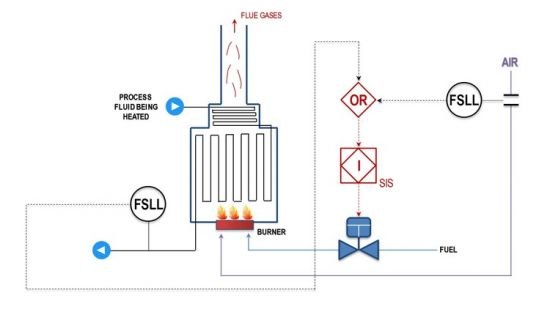|
[ FreeCourseWeb.com ] Know Read Understand Piping & Instrumentation Diagrams P&IDs
Download More Latest Courses Visit -->> https://FreeCourseWeb.com

MP4 | Video: h264, 1280x720 | Audio: AAC, 44.1 KHz, 2 Ch
Genre: eLearning | Language: English + .srt | Duration: 124 lectures (7h 44m) | Size: 1.42 GB
Learn how Process Control, Safety Instrumented Systems, Interlock & Alarms are represented in engineering P&ID drawings
What you'll learn:
Understand and evaluate the purpose, content, and importance of P&IDs to the construction, commissionning, safe operation and maintenance of a process plant
Learn how to read, interpret and successfully understand ALL P&IDs through numerous real industrial examples
Identify the 5 key sections of your P&ID (title block, grid system, revision block, notes and legend, engineering drawing block)
Know and identify valve symbols on your P&IDs (gate, globe, ball, butterfly, needle…)
Know and identify valve actuator symbols on your P&IDs (pneumatic, hydraulic, electric, single acting spring return, double acting…)
Know the standards and conventions for valve status (open, closed, throttled)
Identify valve position and failure mode on your P&IDs (LO, LC, FO, FC, FAI…)
Know and identify process equipment symbols on your P&IDs (pumps, compressors, heat exchangers, columns, furnaces, reactors, vessels, containers, mixers…)
Know and identify piping symbols on your P&IDs (process, pneumatic, electric, hydraulic…)
Determine specific information about a process piping including type of material in the line, line size, line number and type of insulation when applicable
Know and identify pipe fitting symbols on your P&IDs (flanges, reductions, caps, spool pieces, unions…)
Know and identify the P&ID symbols of safety devices that are used to safely isolate, vent & drain process equipment for ease of maintenance (spectacle and spade blinds, double block and bleed valves…)
Know and identify pneumatic, electric, hydraulic and instrument signal lines on your P&IDs
Know and identify instrumentation symbols on your P&IDs (flow meters, temperature transmitters, pressure gauges…)
Know and identify the location of instruments, recorders, modifiers and controllers on your P&IDs (field mounted, board mounted, inaccessible…)
Know the lettering and numbering standards based on ISA symbolgy for piping, instruments and equipment designation on your P&IDs
Trace the flow of a process stream into your P&ID, through the pipes and equipment, and out of the P&ID
Understand the importance of process control and how it is displayed on your P&IDs
Successfully interpret basic process control schemes on your P&IDs
Understand the different process control options and how they are displayed on your P&IDs (cascade control, split range control, ratio control, batch control, selective control…)
Define the term Flow Control and explain how it is displayed on your P&IDs
Define the term Temperature Control and explain how it is displayed on your P&IDs
Define the term Pressure Control and explain how it is displayed on your P&IDs
Define the term Level Control and explain how it is displayed on your P&IDs
Understand the control of pressure in a pipe and explain how it is displayed on your P&IDs
Understand the control of flow in a pipe and explain how it is displayed on your P&IDs
Understand flow merging control and explain how it is displayed on your P&IDs
Understand flow splitting control and explain how it is displayed on your P&IDs
Understand centrifugal pump control systems (discharge throttling, variable speed drive, minimum flow…) and explain how they are displayed on your P&IDs
Understand positive displacement pump control systems (recirculation pipe, variable speed drive, stroke adjustment…) and explain how they are displayed on your P&IDs
Understand compressor control systems (capacity control, variable speed drive, anti-surge…) and explain how they are displayed on your P&IDs
Understand heat exchanger control systems (direct control, bypass control, back pressure control…) and explain how they are displayed on your P&IDs
Understand reactor temperature control systems and explain how they are displayed on your P&IDs
Understand fired heater control systems and explain how they are displayed on your P&IDs
Understand container and vessel control systems and explain how they are displayed on your P&IDs
Understand electric motor control systems (ON / OFF actions) and explain how they are displayed on your P&IDs
Know and understand the concept of Safety Instrumented Systems (SIS) and explain how safety instrumented functions are displayed on your P&IDs
Know and understand the concept of Alarm Systems and explain how alarms are displayed on your P&IDs
Identify safe operating limits based on system designs as displayed on your P&IDs
Know and understand how Fire and Gas Detection Systems (FGS) are displayed on P&IDs
Assess emergency situations and regulatory compliance issues using your P&IDs
Requirements
Some engineering or field knowledge is preferable but not mandatory. All the concepts are explained in depth using an easy to understand language to allow students to build their knowledge from the ground up
Description
Piping and Instrumentation Diagrams commonly referred to as P&ID’s are encountred nowadays throughout all process industries such as Oil & Gas, chemical, pharmaceutical or food industries.
These engineering drawings are used worldwide in design, construction, commissioning, operation and maintenance of industrial plants.
Use Winrar to Extract. And use a shorter path when extracting, such as C: drive
ALSO ANOTHER TIP: You Can Easily Navigate Using Winrar and Rename the Too Long File/ Folder Name if Needed While You Cannot in Default Windows Explorer. You are Welcome ! :)
Download More Latest Courses Visit -->> https://FreeCourseWeb.com
Get Latest Apps Tips and Tricks -->> https://AppWikia.com
We upload these learning materials for the people from all over the world, who have the talent and motivation to sharpen their skills/ knowledge but do not have the financial support to afford the materials. If you like this content and if you are truly in a position that you can actually buy the materials, then Please, we repeat, Please, Support Authors. They Deserve it! Because always remember, without "Them", you and we won't be here having this conversation. Think about it! Peace...


|

